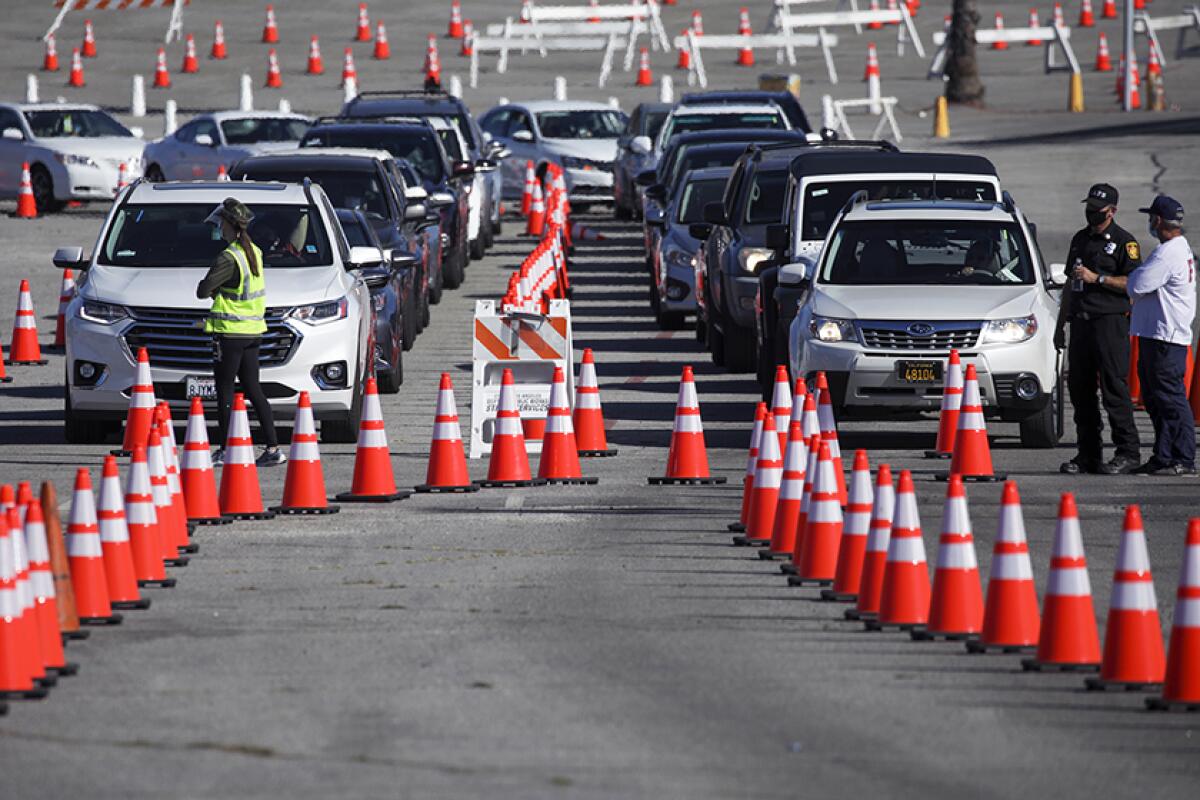Why public health messaging should emphasize vaccine acceptance, not hesitancy

- Share via
Human beings are deeply social, and that’s not surprising. But this fact has taken on new urgency as we struggle to reach herd immunity in the face of new, more transmissible forms of COVID-19. One fear that public health officials have repeatedly articulated is vaccine hesitancy — that despite the availability of safe vaccines, not enough people will accept them, creating insufficient protection for us all.
There is a dangerous irony in this style of health communication: Although some portion of society will resist or refuse vaccines, our research highlights how overstating or overemphasizing hesitancy can, by itself, keep others from getting vaccinated. Public health communications should instead be emphasizing the reality that large majorities around the world are accepting vaccines, not rejecting them.
Our team at the Massachusetts Institute of Technology Initiative on the Digital Economy analyzed the impact of communicating accurate vaccine intentions on the acceptance or non-acceptance of the COVID-19 vaccine in a large global experiment involving over 300,000 people in 23 countries. In the study, we randomized whether people were given information about vaccine acceptance in their country before or after a detailed question about their own intentions to accept a vaccine.
For example, participants were told that based on survey responses in the previous month, we estimate “that X percent of people in your country say they will take a vaccine if one is made available.” The stated percentage reflected accurate survey information about how many people in the respondent’s country reported they would be vaccinated.
We wanted to find out how informing people about the prevalence of vaccine takers around them would influence their own vaccination choices. It’s an important question because conformity and reciprocity could motivate people to take vaccines the more others take them. However, there is a possibility that people would rather free-ride on the herd immunity created by other people’s vaccinations.
Understanding which factor will prevail is essential to promoting vaccines effectively. Since some people in the study were randomly exposed to the vaccine acceptance of others before being asked about their own vaccine intentions, we could estimate how communicating this information affected people’s vaccine choices.
We found that giving people accurate information about the vaccine acceptance of others substantially increased the likelihood that they would take a vaccine themselves. Simply informing them about the fraction of vaccine takers in their communities reduced the fraction of people who said they were “unsure” or would not accept a vaccine by 5%.
Our analysis also made clear that this message works best on those who overestimate vaccine hesitancy the most. Those who came into the survey saying they thought vaccine acceptance was low compared with our estimates of country-wide intentions were more likely to tilt toward accepting the vaccines once they were given concrete numbers.
While our experiment involved a subset of 300,000 people, our survey — conducted in collaboration with Facebook and researchers at Johns Hopkins University and the World Health Organization — is much larger and has tracked the vaccine decisions of 1.6 million people across 67 countries since July 2020.
Over the last four weeks in the United States, more than 65% of adults intend to accept a vaccine or have already received one, according to our estimates. More than 80% of adults in our surveys either say they will take a vaccine or that they simply don’t know yet. These majorities, which have grown over the last few months, are the largest since we began tracking this in July.
So when we hear statements like this from infectious diseases expert Dr. Anthony Fauci: “My primary biggest fear is that a substantial proportion of the people will be hesitant to get vaccinated,” we cringe. Declarations like that can cause the public to overestimate vaccine hesitancy. And — as our experiment demonstrates — beliefs about others’ vaccine acceptance increase people’s own vaccine acceptance, so statements that lead to overestimating vaccine hesitancy can create a vicious cycle of hesitancy.
Our research has significant implications for how public health officials, the news media and others should communicate about vaccine hesitancy. It is important to couch such conversations in the context of large — and often increasing — majorities who intend to accept COVID-19 vaccines.
Instead of focusing on a negative vaccine message, Fauci and others should emphasize that they are encouraged that an overwhelming majority are accepting vaccines, and that it’s important to convey to those who remain hesitant that vaccines are both safe and effective.
These kinds of social norm messages should be featured in public health campaigns. Proactively emphasizing the vaccine acceptance of others — including our community leaders, public figures and even our neighbors — can help boost vaccination rates to the level needed to end the pandemic.
Sinan Aral is director of the MIT Initiative on the Digital Economy and author of “The Hype Machine: How Social Media Disrupts our Elections, Our Economy and Our Health — and How We Must Adapt.” Dean Eckles is an associate professor of marketing at the MIT Sloan School of Management.
More to Read
A cure for the common opinion
Get thought-provoking perspectives with our weekly newsletter.
You may occasionally receive promotional content from the Los Angeles Times.









